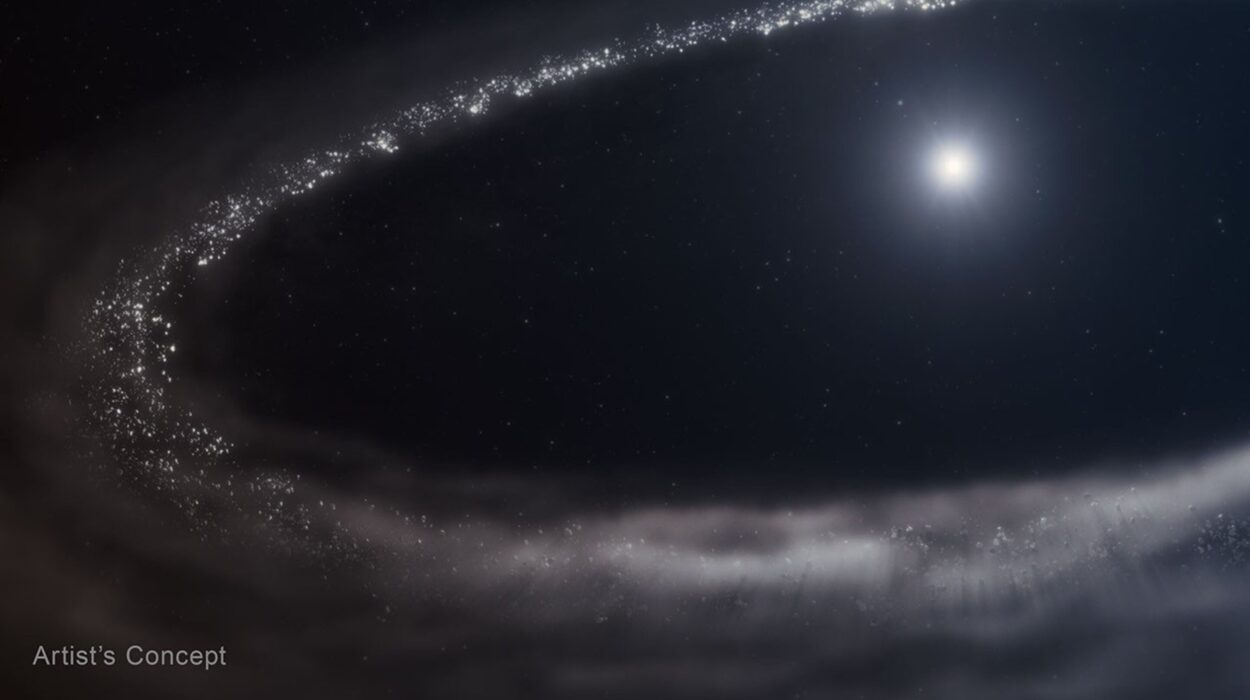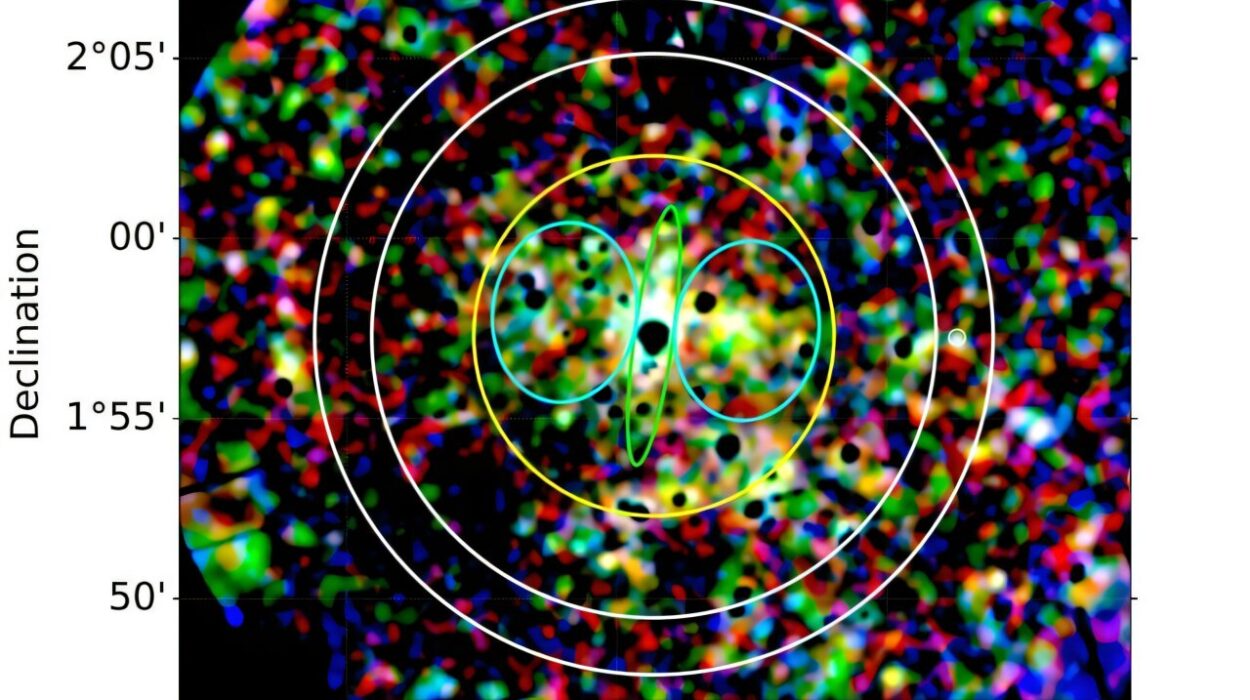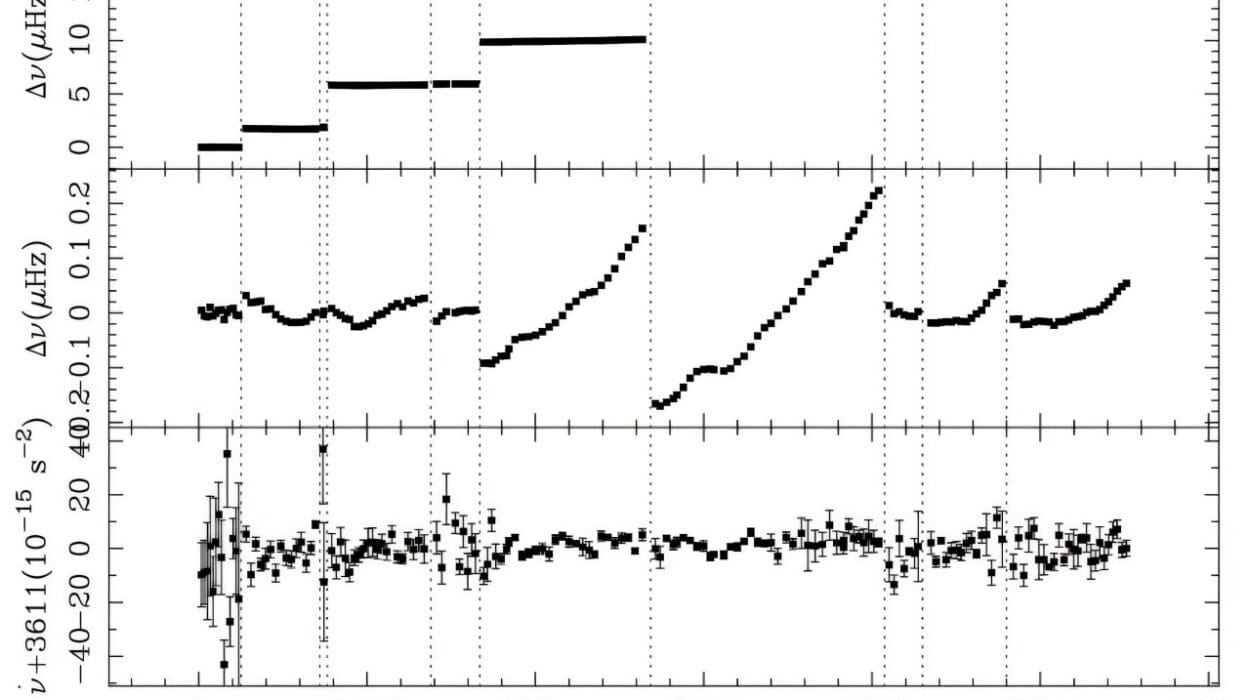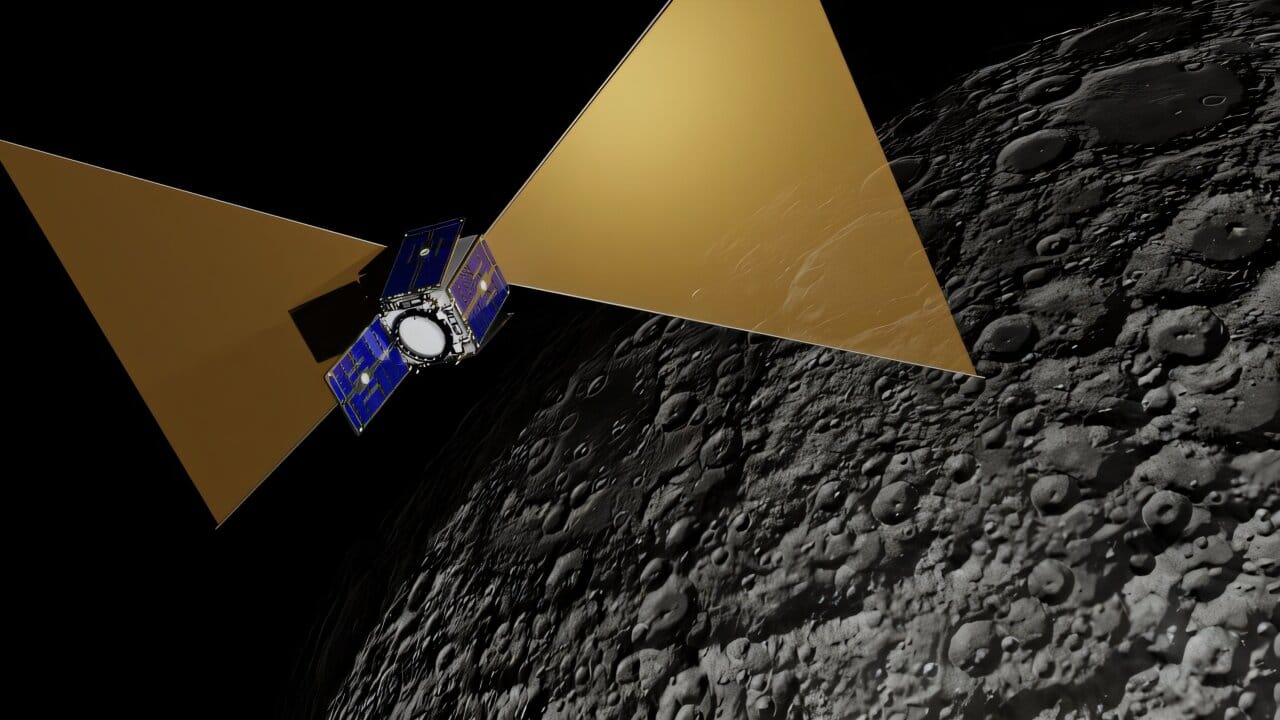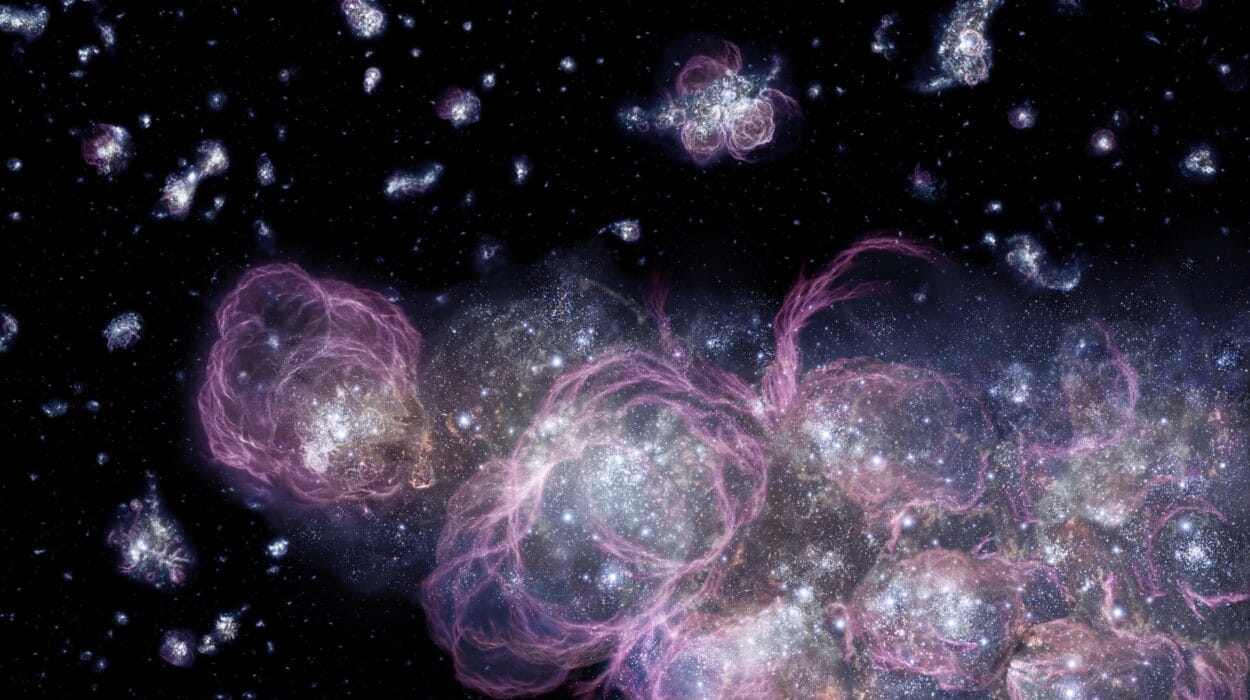On clear nights, when the moon hides and city lights are far away, the heavens unveil something breathtaking—an arch of pale, misty light stretching across the sky. To the naked eye, it looks like a ghostly cloud, a soft brushstroke across the cosmic canvas. But if you could gaze through a telescope, that faint glow would resolve into millions upon millions of stars. You would be looking into the heart of the Milky Way—our home galaxy, the grand island of stars in which our Sun and Earth reside.
For millennia, humans have looked up at this celestial river in wonder. The Greeks called it “Galaxias Kyklos,” the Milky Circle. The Romans named it “Via Lactea,” the Milky Road. In India, it was a divine river of the sky. The Mayans saw it as a celestial tree, while the Aboriginal peoples of Australia imagined it as a giant emu stretching across the heavens. These myths, born from curiosity and awe, were humanity’s first attempts to make sense of the glowing ribbon above.
Yet this shimmering light is more than just a visual marvel. It is a cosmic city spanning a hundred thousand light-years, containing hundreds of billions of stars, swirling together in a graceful spiral bound by gravity and shaped by forces we are only beginning to understand. Within it lie stories older than Earth itself—tales of birth and death of stars, of mysterious invisible matter, of a monstrous black hole lurking silently at its center. To understand the Milky Way is to understand where we come from and where we are going.
The Immensity of Our Galactic Home
If you could rise high above the Milky Way and look back upon it, you would see a stunning barred spiral galaxy—its central bar glowing warmly with tightly packed stars, its majestic arms curling outward like cosmic ribbons. This island of light measures about 100,000 light-years across and 1,000 light-years thick. To cross it from edge to edge, even a beam of light—the fastest traveler in the universe—would need a hundred millennia.
Despite its immensity, the Milky Way is but one of trillions of galaxies scattered throughout the observable universe. Yet it is vast enough to humble the human imagination. Within it dwell over 200 billion stars and possibly more than 100 billion planets. Giant clouds of gas and cosmic dust drift between the stars, forming stellar nurseries where new suns are born. Invisible to our eyes but dominating its mass is dark matter—a mysterious substance that cannot be seen or touched but whose gravity binds the galaxy together, preventing its stars from flying apart.
Our Sun sits in a relatively calm neighborhood of this immense structure, halfway out from the galactic center in a minor arm called the Orion Spur. It takes our solar system roughly 225 million years to complete just one orbit around the galaxy. Since the time of the dinosaurs, we have completed only a single lap. Civilization itself has lasted less than a blink in galactic time. The Milky Way is not just a place we live in—it is an enduring, ancient home that has existed long before humans and will continue long after we are gone.
The Architecture of a Spiral Giant
Though it appears as a glowing band from Earth, the Milky Way’s true shape is a beautiful barred spiral galaxy. At its heart lies a dense, bulging core of stars. From this central region, spiral arms unfurl, winding gracefully around the galactic center like whirlpools frozen in time. These arms are not rigid, static features but regions of higher density—a cosmic traffic jam where stars and gas bunch together.
Astronomers have identified several major arms: the Perseus Arm, the Sagittarius Arm, and the outer Norma Arm. Between them are smaller spurs, including our Orion Spur. These arms blaze with activity. Star-forming regions glow with hot, blue young stars. Nebulae, sculpted by radiation and stellar winds, color the arms in brilliant pinks and purples. Supernovae punctuate this stellar tapestry with bursts of light and energy, recycling heavy elements into space to form future generations of stars and planets.
Beyond the thin disk of the galaxy lies the halo, a vast spherical region populated by ancient stars and globular clusters—dense, spherical swarms of up to a million stars orbiting like satellites around the galactic center. The halo extends far beyond the visible disk, gradually thinning into the intergalactic medium, yet it contains a large portion of the Milky Way’s unseen dark matter.
A Journey Along the Spiral Arms
Imagine setting out on a journey from our Sun, gliding along the Orion Spur in a starship. Nearby, you would see familiar constellations, bright stars like Sirius and Betelgeuse. But as you traveled further, the scale of the galaxy would reveal itself. You would pass enormous molecular clouds where stars are born, regions like the Eagle Nebula, home to the famous Pillars of Creation—towering columns of gas lit by newly ignited stars.
Further along, you would encounter massive clusters of hot, young stars. Some would be hundreds of times more massive than the Sun, shining with fierce brilliance yet destined to die in mere millions of years—cosmic fireflies compared to the Sun’s steady 10-billion-year life. Supernova remnants would scatter the region, their expanding shells of gas glowing as they seeded the surrounding space with heavy elements—carbon, oxygen, iron, and more.
Traveling inward toward the galactic center, stellar density would increase dramatically. Stars would crowd together, orbiting rapidly in the deeper gravitational well. Clouds of dust and gas would obscure much of the light, forming dark lanes that weave through the spiral arms. This dust, while obscuring, is essential: it is the raw material for planets and life itself. Without these cosmic clouds, there would be no Earth, no oceans, no humans to gaze at the galaxy’s wonders.
The Turbulent Heart: Sagittarius A*
At the very core of the Milky Way lies its most mysterious inhabitant: Sagittarius A*, a supermassive black hole with a mass about four million times that of the Sun. Hidden behind thick dust clouds, it cannot be seen directly in visible light. Instead, astronomers observe the motions of nearby stars, which zip around an invisible center at incredible speeds. Only a black hole could pack so much mass into such a small space.
Sagittarius A* is not the ravenous monster popular imagination might suggest. It currently consumes matter only sporadically, occasionally flaring in X-ray and infrared light. Yet evidence shows that in the past, it may have been far more active, unleashing powerful jets of energy that shaped the central region of the galaxy.
Around this black hole, stars dance in a complex gravitational ballet. Some complete orbits in just a few decades, moving so fast that their paths have provided direct proof of the black hole’s existence. These observations, honored with the 2020 Nobel Prize in Physics, confirmed that supermassive black holes are not just theoretical—they are real, cosmic engines lurking in the centers of galaxies like ours.
The Galactic Family of Stars
The stars of the Milky Way are as diverse as they are numerous. The smallest, red dwarfs, are dim and cool, burning their fuel so slowly that they will outlive every other type of star, shining for trillions of years. Larger stars, like blue giants, blaze intensely and live only briefly before exploding in spectacular supernovae.
Our Sun is an unremarkable yellow G-type star—ordinary compared to many of its neighbors. Yet stars like the Sun are crucial, stable enough to allow planets to form and life to emerge. Surrounding each star could be worlds unknown; astronomers estimate that the Milky Way may contain tens of billions of Earth-like planets, some potentially harboring alien life.
Many stars are ancient, dating back nearly to the birth of the galaxy. These Population II stars, found in the halo and globular clusters, contain very few heavy elements, having formed before supernovae enriched the galaxy with metals. Younger Population I stars, like the Sun, are richer in these elements, inheriting the cosmic debris of countless stellar generations.
The Invisible Glue: Dark Matter and Gas
While stars may dominate our view, they make up only a fraction of the Milky Way’s mass. A vast, unseen component called dark matter envelopes the galaxy, extending well beyond the visible disk. We cannot see it, but its gravity shapes the rotation of stars and holds the galaxy together. Without dark matter, the Milky Way would simply fly apart.
Between stars lies the interstellar medium—a tenuous mixture of gas and dust. Hydrogen, the most abundant element, forms massive clouds that serve as stellar nurseries. Dust grains, though tiny, obscure light, creating the dark lanes visible in the Milky Way’s band. These materials cycle endlessly: stars form from gas, live their lives, explode, and return enriched matter to space, fueling the birth of future stars.
This cosmic recycling is responsible for every atom in our bodies heavier than hydrogen. The iron in your blood, the calcium in your bones, the oxygen you breathe—they were all forged in stars that lived and died long before the Sun was born. In a very real sense, we are made of the galaxy itself.
The Galactic Halo: Ancient Echoes
Far above and below the galactic disk lies the halo, a sparse but massive region containing ancient stars and globular clusters. Some of these clusters are more than 12 billion years old, nearly as old as the universe itself. They are relics from the Milky Way’s formative years, survivors from an era when smaller protogalaxies merged to create the modern Milky Way.
The halo also holds streams of stars—the remains of dwarf galaxies torn apart by tidal forces as the Milky Way absorbed them. This galactic cannibalism continues today; even now, the Milky Way is devouring smaller companions like the Sagittarius Dwarf Galaxy. Over billions of years, such mergers have shaped the galaxy’s growth and structure.
The Milky Way in Motion
The Milky Way is not a static island of stars—it moves through the cosmos as part of the Local Group, a collection of over 50 galaxies including the Andromeda Galaxy and the Triangulum Galaxy. Our galaxy is on a slow, inevitable collision course with Andromeda. In about four billion years, the two spirals will merge in a titanic cosmic dance.
Though this sounds catastrophic, individual stars will almost never collide due to the vast distances between them. Instead, gravitational forces will warp and reshape both galaxies, triggering waves of star formation. The supermassive black holes at their centers will spiral together and eventually merge, unleashing powerful gravitational waves across the universe. The result will be a single, massive elliptical galaxy—sometimes called “Milkomeda”—that will continue shining for trillions of years.
Humanity’s View of the Galaxy
For most of human history, the Milky Way was an object of myth and wonder. Only in the early 20th century did astronomers realize its true nature as one of countless galaxies. With powerful telescopes, radio observations, and space missions like Gaia, we now map billions of stars and trace the structure of our galactic home with unprecedented precision.
Yet despite our scientific knowledge, standing under the Milky Way still evokes primal awe. Its arc of light reminds us that we are part of something vast and ancient, connected to stars that lived and died before Earth existed. Looking up, we feel the echo of every human who ever wondered what lies beyond.
The Unfolding Mystery
Despite centuries of study, the Milky Way still holds mysteries. We do not fully understand dark matter, nor the detailed history of how the galaxy formed. We have only begun to explore the billions of planets it harbors. The behavior of Sagittarius A*, the processes driving star formation, and the ultimate fate of the galaxy remain active frontiers of research.
Future telescopes and missions promise to reveal more. The James Webb Space Telescope will peer into dusty star-forming regions, while radio arrays will map the galaxy’s structure in detail. One day, spacecraft may even leave the Milky Way, turning back to give humanity its first true portrait of our cosmic home.
Our Place Among the Stars
To know the Milky Way is to see ourselves in a new light. We are not separate from it—we are its children. Every element in our bodies was born in ancient stars of this galaxy. Our Sun is one of hundreds of billions, yet to us it is everything: our warmth, our light, our life.
As we gaze at the Milky Way’s glowing band, we are looking into a mirror, seeing the structure that gave us existence. It reminds us that we are fleeting, yet part of something eternal. The galaxy will endure long after our species is gone, continuing its slow dance through the universe, forging new stars and worlds, carrying forward the matter that once lived as us.
The Milky Way is not just where we live. It is what we are. And as long as we look up at the night sky, that river of light will continue to inspire wonder, urging us to explore, to dream, and to remember that in this vast, mysterious cosmos, we have always been home.

